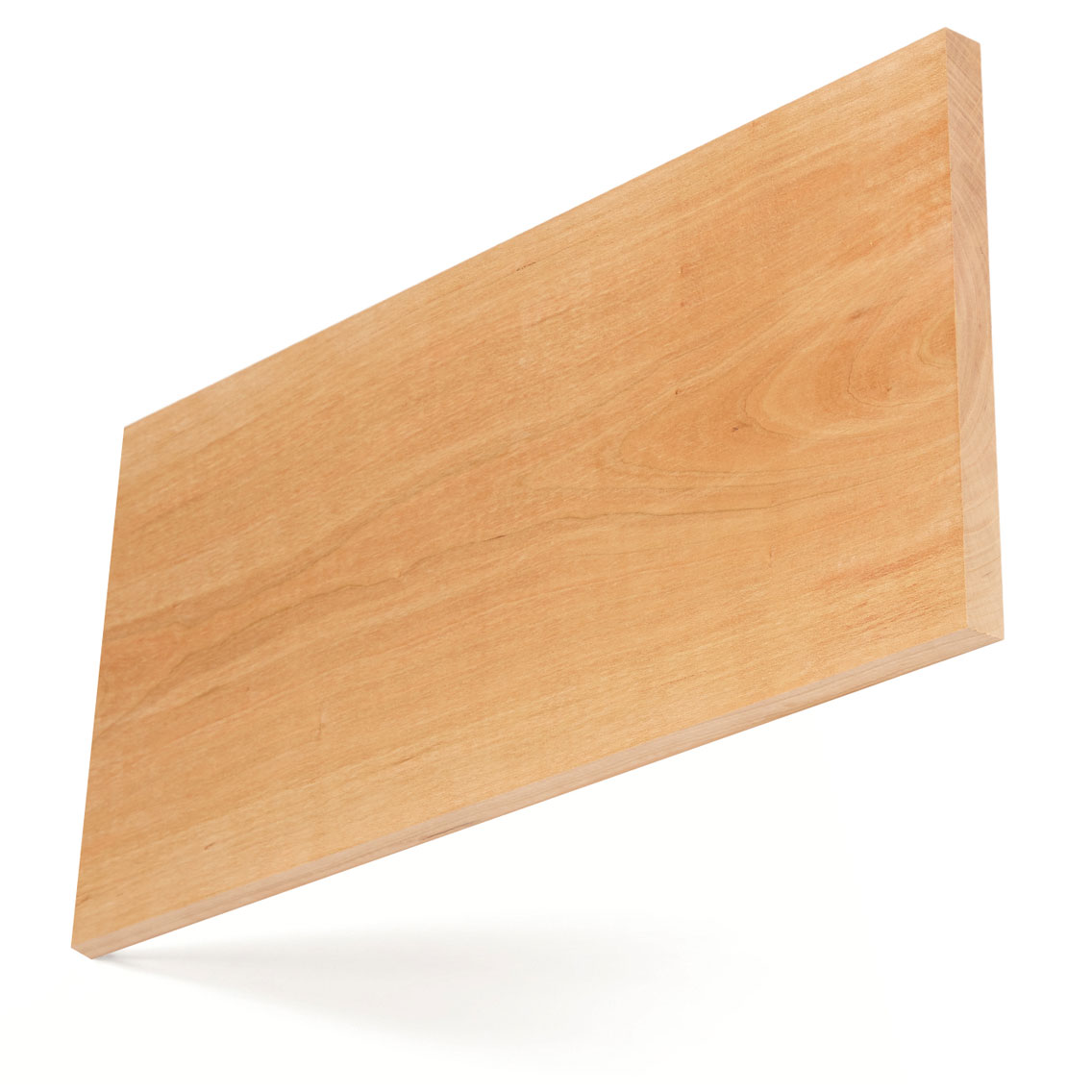American cherry
American cherry is a supreme hardwood species from the U.S. hardwood forests and is unique to North America, with warm colour tones and superb finishing qualities.
Latin Name
Prunus serotina
Other Common Names
Black cherry

Forest Distribution
American forest cherry trees grow principally in the northeast of the USA in mixed hardwood forests. The species is different from the many floral cherries planted throughout the world. It is a single species; the trees growing tall and often in dense stands in several U.S. states, notably Pennsylvania, New York, Virginia and West Virginia. Cherry has a relatively short rotation, taking less time to mature than other hardwoods. Much of the current resource is the result of cherry’s ability to regenerate naturally after forest fires.
FOREST GROWTH
FIA data shows U.S. cherry growing stock is 423.6 million m3, 2.9% of total U.S. hardwood growing stock. American cherry is growing 10.3 million m3 per year while the harvest is 4.9 million m3 per year. The net volume (after harvest) is increasing by 5.4 million m3 each year. U.S. cherry growth exceeds harvest in all the main producing states.
LCA Tool
seconds
Material Availability
- Cherry from the USA is readily available as veneer and sawn lumber in a range of grades and sizes, although limited as thicker material; 10/4” (63mm) & 12/4” (75mm). The species can be subject to cycles of popularity or fashion, so that apparent shortages of dry lumber available to deliver may not reflect the substantial resource available for harvest.
- Cherry may be sold selected for colour, defining the amount of sap-free material or sold sap-free one face. For example, cherry boards may be sold 90/50 meaning 90% heartwood and not less than 50% heartwood on the reverse side – or sold in other specifications. Consultation with suppliers is recommended.
Wood Description
The heartwood of cherry can vary from rich red to reddish brown and darkens on exposure to light with time. The sapwood is creamy white. Although the difference between heart and sap colour is marked, this can be reduced by steaming. The wood of cherry has a fine uniform, straight and unpronounced grain with a fine smooth texture. The small brown pith flecks, pin knots and gum pockets or streaks are natural characteristics of cherry, but their occurrence varies according to region.
Mechanical Properties
Cherry has medium density, with good wood bending properties, medium strength and shock resistance, but low stiffness, and can be steam bent with care. Being hard and stable when dry the wood is very easy to stain and finish to an excellent surface. It is highly prized for furniture and interior joinery. As a relatively soft species, American cherry is only suitable for flooring in areas with low traffic, such as bedrooms, or in cultures where shoes are not worn in homes – as in Asia.
-
0.5
Specific Gravity (12% M.C.)
561 kg/m3
Average Weight (12% M.C.)
9.20%
Average Volume Shrinkage (Green to 6% M.C.)
84.809 MPa
Modulus of Rupture
10,274 MPa
Modulus of Elasticity
49.023 MPa
Compressive strength (parallel to grain)
4,226 N
Hardness
Oiled / Un-Oiled Appearance


Performance
- Cherry lumber is easy to machine, plane and turn. It glues well with good performance in screwing and nailing. It has excellent carving and moulding properties. Cherry can easily be sanded, stained and polished to a very fine and smooth finish.
- The heartwood is resistant to decay and is moderately resistant to preservative treatment.
- Users should take into account that both the heartwood of cherry can darken in tone quite quickly on exposure to light.
Main Uses
This sustainably managed wood from natural forests of North America, with excellent environmental credentials, is revered worldwide for its warmth of colour and fine finish. It is highly suitable for furniture, cabinet making and high class joinery. It is widely used for doors, panelling, architectural interior joinery, mouldings and kitchen cabinets, and some flooring. It is also used in certain specialist applications such as musical instruments and boat interiors.